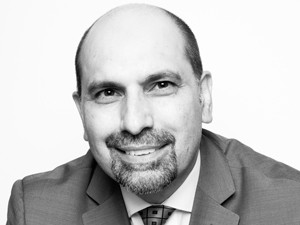
SA's power utility, Eskom, aims to wrap up its move to SAP in the next few years at the same time as it targets automation to improve efficiencies.
CIO Sal Laher says the utility is busy with 100 key projects in its IT unit, which it expects to wrap up in 2015. The bulk of these relates to the core business and deals with issues such as fuel management, generation and business engineering, he notes.
Laher's plan is to make Eskom more efficient by implementing automated processes and other technology that improves efficiency.
The IT unit's priorities include being available 100% of the time, and eliminating "P1" incidents, says Laher. A priority one incident is when a major system goes down, which affects Eskom's core ability to deliver power "big time", he adds.
For the fiscal year that is drawing to a close, Laher says spending is in line with the forecast of R3 billion in operational spending, and R3.1 billion in capital expenditure. However, he notes spending is being trimmed each year thanks to automation and increased productivity.
For the new year, the budget will be about the same, adjusted only for inflation, but another savings target will be set, says Laher.
While Laher seeks more efficiencies, Eskom's budget is being moved from keeping the lights on (currently 29.5% of the IT spend) to innovation (37.5%). The unit spends about 3% of Eskom's around R128 billion in annual revenue and the balance of its budget goes into telephony, its data centre capacity and helpdesk, he says.
Laher is in the process of implementing a group-wide IT plan that is now a year old, but has been refreshed. A year ago, the strategy was at design stage, and it is now being executed against 26 initiatives, he says.
Implementing software
In addition, the utility is rolling out SAP across the business, and expects to spend a total of between R3 billion and R5 billion on SAP during its rollout, which Laher says is in line with industry standards for a rollout of its size. Eskom has about 54 000 staff.
So far, Eskom has implemented the first phase of SAP. Phase two, which the company has been implementing since mid-2013, will take it through to March 2015, after which it will move onto the final stage, says Laher.
Eskom's SAP project is slowly being deepened in terms of functionality and expanded across the business, says Laher. The latest addition, real estate, went live in December.
The third stage will take between 12 and 18 months, after which Eskom will have implemented what it aimed to achieve, says Laher. He notes, however, the implementation will depend on the business plan and could be changed.
Phase one included 26 modules, while two is slightly smaller. He says phase three focuses on wrapping up the remaining "bits". Implementation is prioritised based on the business' needs and where the most benefit can be gained, he explains.
Mobile workforce
The group has also rolled out Windows 7 and 8 - moving from XP - and given its executives slates and ultrabooks to improve productivity, says Laher. He adds the group's smart grid strategy has been completed.
Laher says the division aims to improve what he terms "efficiency" by 10% each year, which will result in savings, but without cutting heads. He says the group has not cut any staff since he joined in April 2012 and it still has around 2 000 permanent and contract employees, of which 1 023 are full-time.
Eskom's IT efficiencies are also filtering through to its bottom line and Laher, during normal negotiations, pushes for the best prices from suppliers. This includes volume discounts and fixed prices over long-term contracts.
So far, group IT has contributed savings of R1.172 billion to the company by eradicating wastage. "We're trying to do more with what we have."
Eskom is also recruiting permanent staff and wants to fill another 40 vacancies, the bulk of which are for SAP, while another 20 are required for business intelligence, says Laher. He explains this will allow it to trim its reliance on contractors and deal with the issue of an aging workforce.
"I don't mind spending on staff if it makes a difference to the bottom line."
Laher also has a focus on increasing spend with black-owned companies and has a graduate training programme. "We've been building the skill locally."
Share